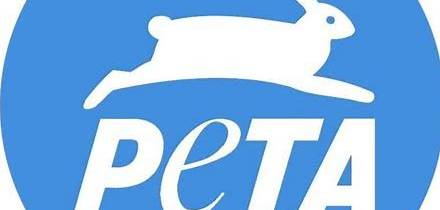
Frightening scenes of violence against Australian cattle were filmed at Indonesian slaughterhouses this year, prompting PETA to file yet another round of complaints with authorities. However, the government has shown no willingness to do anything.
PETA's investigation is a poignant snapshot of the trade that supplies meat to the Indonesian industry and skin to the global leather industry. Some of the facilities visited by investigators from PETA are even part of the insurance supply chain exporters system (ESCAS) Australian Government, dispelling any doubts about government inaction.
In the same month this abuse occurred, Australian Livestock Exporters' Council (ALEC) CEO Mark Harvey-Sutton expressed his "full confidence in the standards that Australian industry stands for ."
If we look at the following images, we have the right to strongly doubt:
No dizziness or so sloppy
PETA investigators visited seven randomly selected slaughterhouses in Indonesia in April and May 2021.
They found steers and bulls crammed into holding boxes and shot in the head with captive bolt rifles. Cattle were often fully aware of what was happening to them. They slammed their bodies against the metal chute they were trapped in, in a futile attempt to turn around and escape.
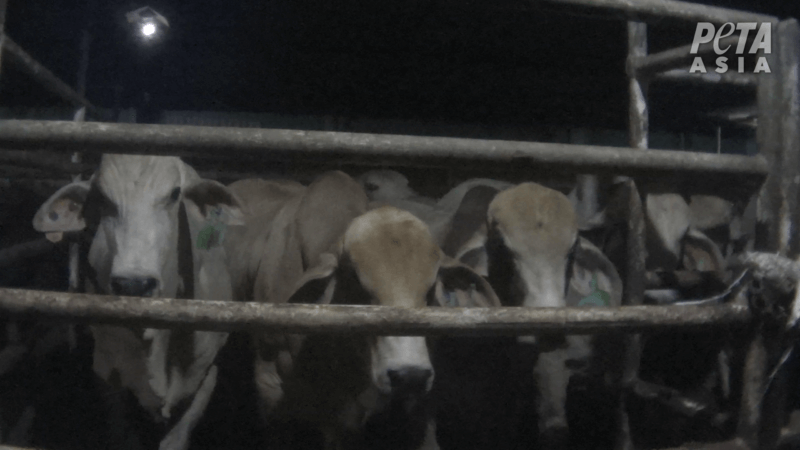
On several occasions, the workers failed to adequately stun the cows. Visibly still conscious after being shot in the head, a steer was punched 64 times in the face and chest with a steel rod in an attempt to force him to stand up so a worker could shoot him again .
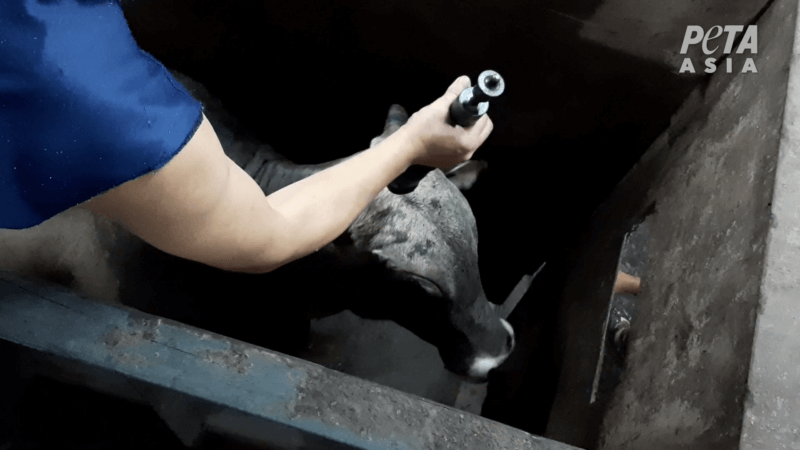
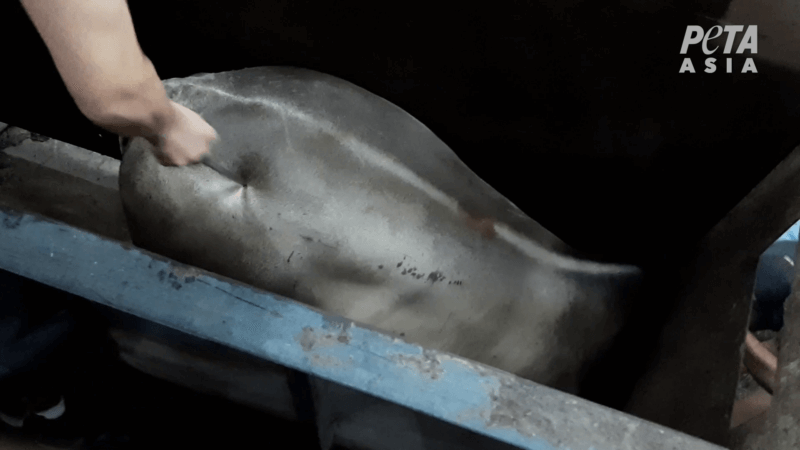
The workers also violently twisted his tail until it was broken. In a final attempt to move the troubled and panicked steer, they pulled on his broken tail a dozen times.
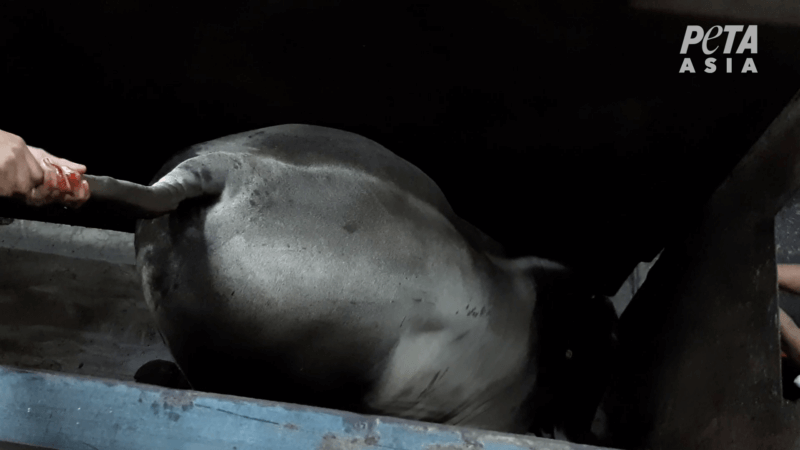
Then there were those for whom stunning wasn't even tempted at all. Some cattle were simply physically restrained before their throats were slit - which, believe it or not, is an Australian government approved method of killing.
ALEC boasts on its website that 95% of Australian cattle in Indonesia are now stunned before slaughter. But from what investigators saw, this is not the case.
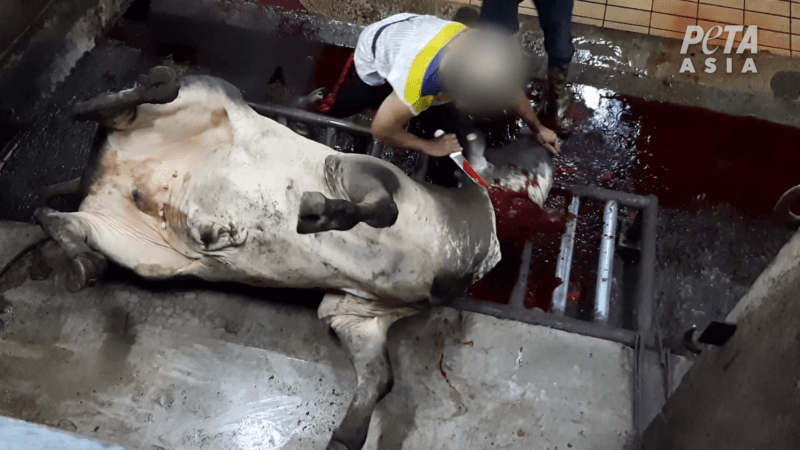
Cattle slaughtered alive
Slaughterhouse workers violently pulled and deliberately stepped on the animals' tails, apparently in a crude attempt to verify consciousness. Some cattle kicked again, but they were still butchered, without any further attempt to render them unconscious.
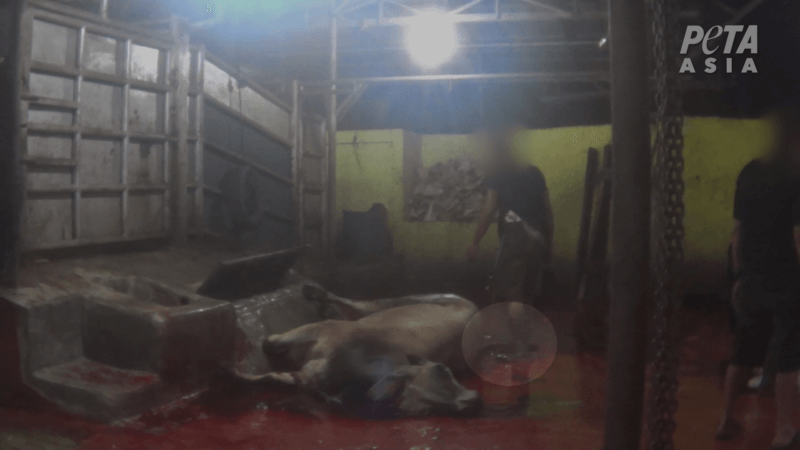
Steers who were still moving, and whose heads were hanging down by a band of flesh only after their throats had been cut, were hung by the necks on metal hooks. Their legs continued to beat as they were dragged across the bloody ground, then hoisted up.
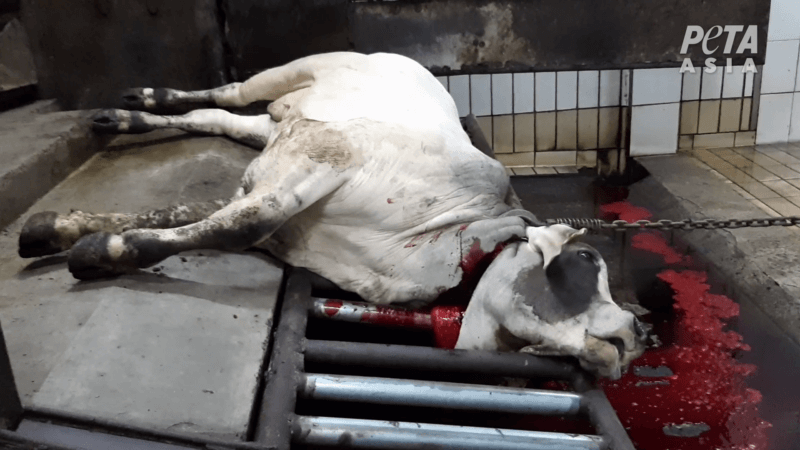
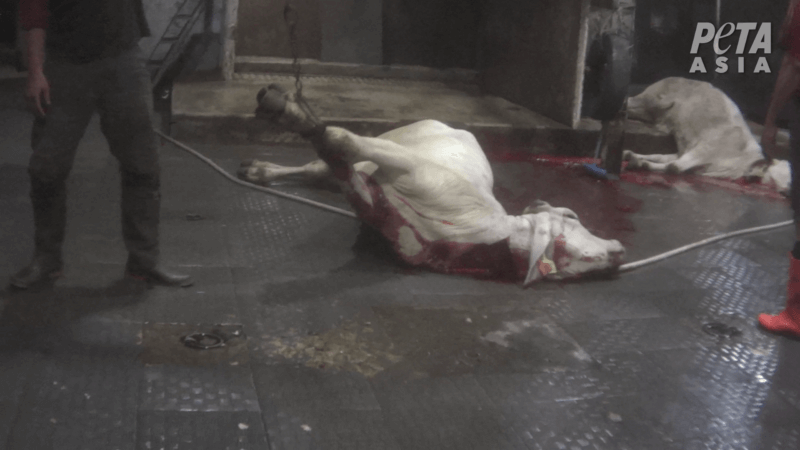
Investigators saw animals blinking after their throats were cut, gasping for air as blood filled their throats. Some have suffered in this way until 12 minutes after being shot with a gun captive bolt.
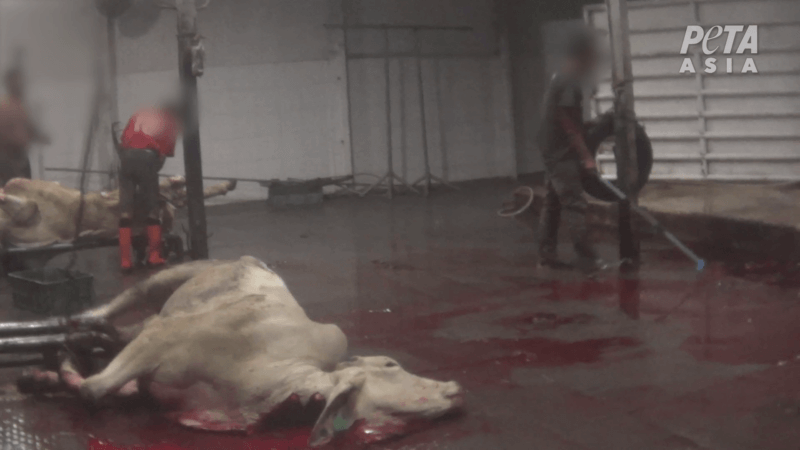
Monica KH Bando, a veterinarian with more than 13 years of clinical and research experience, said the images captured by investigators depicted "gross violations of acceptable animal welfare standards for livestock," including " unsanitary designed, substandard handling, restraint methods that induce stress and distress, lack of or ineffective dizziness, and inhumane killing methods ”.
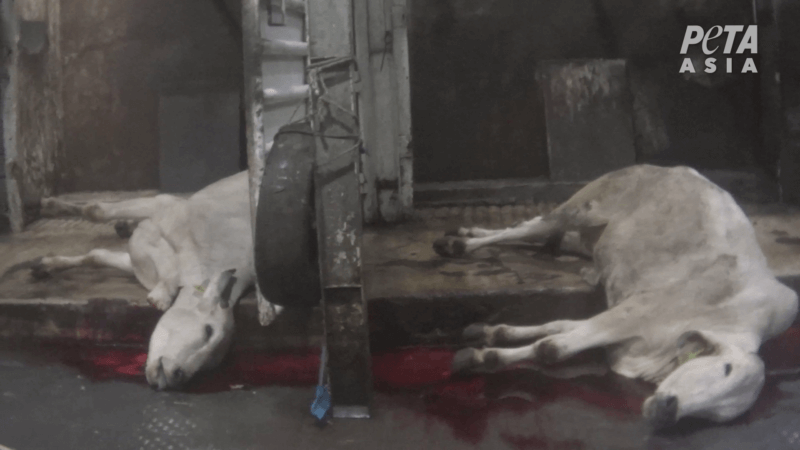
10 years of failure
Workers told investigators the slaughtered cows came from Australia and most had ear tags from Australia's National Cattle Identification System.
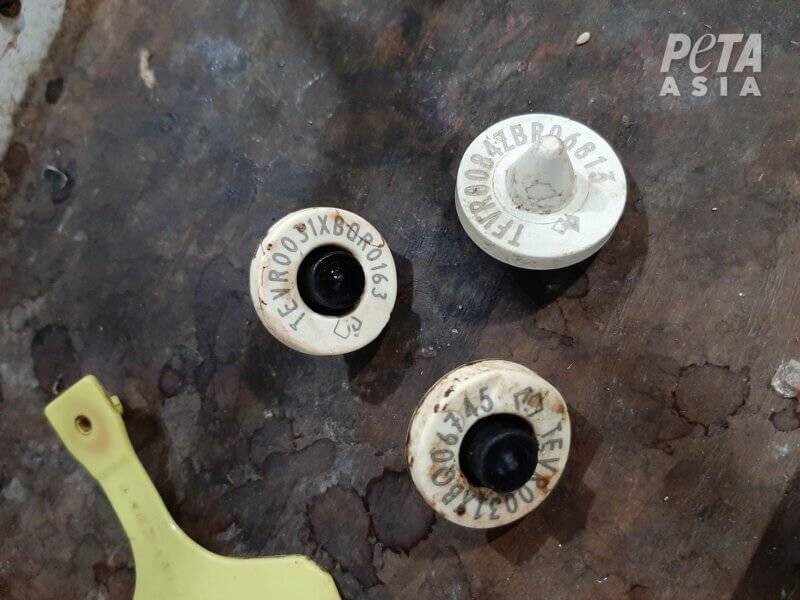
These are only a tiny percentage of the millions of animals that fall victim to the trade in live products directly exported from Australia. Australia exported more than 1.8 million animals in 2020, and the vast majority of them were cattle.
This is a decade that cruelty in the export trade to Indonesia was revealed by Animals Australia on television in the Four Corners program, after which a traceability program - Export Supply Chain Assurance System - has been put in place.
The program did not provide any "assurance" of any kind. In fact, it was a colossal failure. He was supposed to put an end to this kind of cruelty. There were 184 reports! Non-compliance (only reports - the number of incidents is much higher) since its inception.
When these latest footage was filmed, Australia's Department of Agriculture was still investigating cruelty complaints filed by Animals Australia against Indonesian slaughterhouses in 2020.
Australian government ignores this, but we have the power to stop it
The Australian government should prepare for a future without live product exports, but it is not. Each new investigation is "shocking" for those who are in power, but why be surprised? When animals are crammed onto ships as if they were inanimate goods and then sold for slaughter, how can we expect them to be treated as if they mattered pain?
The live export industry is the meat industry and the leather industry. Buying meat, or buying a pair of leather shoes, is almost like putting money straight into the pockets of the same people who send these animals to be slaughtered in horrific and painful ways overseas.
And since the leather produced in Indonesia is exported all over the world, it may be the skin of the same animals that you just watched in that video that you are wearing or sitting on. PETA investigators found that the skins of some cattle were sold to a fashion brand that exports of leather footwear worldwide.
By continuing to buy animal flesh or skins, we send the same message to producers and to the Australian government; that is, this industry has a social license to continue and a sustainable future.
Beyond the pictures that speak for themselves, PETA sends a clear message: "Please act now to change the market and save animals' lives every time you buy a meal, a pair of shoes, a jacket or belt. Personal responsibility will end this trade. Let's go! "
Posted on 2021-11-09 20:05








Comments